Looking for a dog breed that combines the beauty of a shaggy coat with the strength and stamina of a working hound? Look no further than the Otterhound.
With their unique appearance and hunting heritage, these English-origin dogs are a breed like no other.
But there's more to the Otterhound than meets the eye. From their friendly and sociable nature to their adaptability to different living situations, there's a whole world of characteristics and care requirements waiting to be discovered.
So, get ready to dive into the fascinating world of Otterhounds and uncover why they are truly extraordinary.
Key Takeaways
- Otterhounds are a large and powerful breed with a friendly and sociable nature, making them great family pets.
- They have moderate exercise needs and require regular walks and playtime to stay happy and healthy.
- Otterhounds have a distinct appearance with their shaggy double coat, pendulous ears, and loose skin.
- It is important to provide proper care for Otterhounds, including regular veterinary check-ups, adequate exercise, and a balanced diet to maintain their health and well-being.
Origin and History
The Otterhound has a rich and storied history, dating back to medieval England, where it was bred for the purpose of otter hunting. This large and powerful breed was highly valued for its ability to track and capture otters, which were considered pests to fishermen.
The Otterhound's distinctive appearance, with its shaggy double coat, pendulous ears, and loose skin, made it well-suited for its hunting duties. Although otter hunting became illegal in 1982, the Otterhound continued to gain popularity among nobility for its friendly and sociable nature.
In 1900, the breed was brought to the United States and was officially recognized by the AKC in 1991. Today, the Otterhound remains a unique and cherished breed with a fascinating history.
Size and Appearance
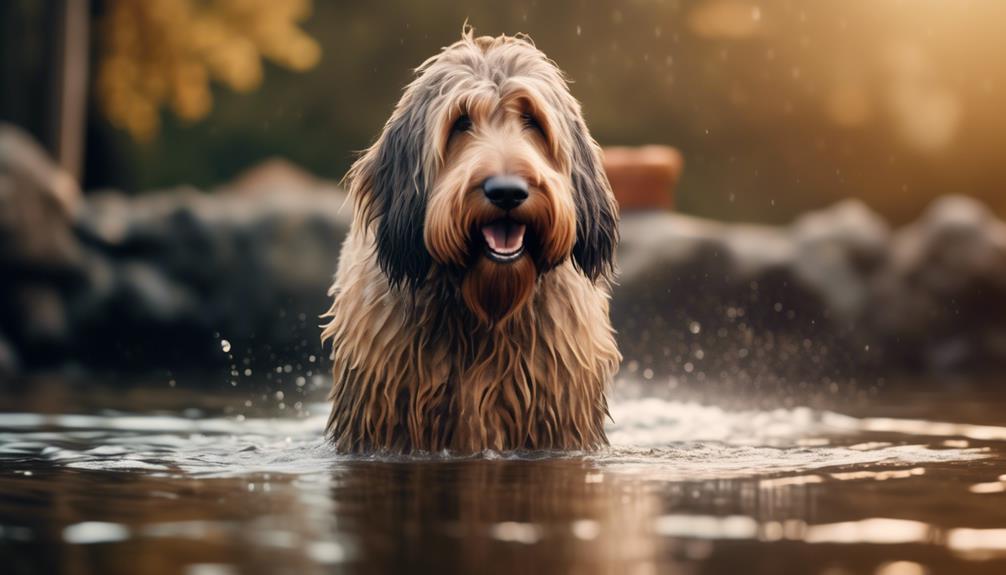
With their large and powerful stature, Otterhounds stand out for their impressive size and distinctive appearance. Here are three key characteristics that contribute to their unique look:
- Shaggy Double Coat: Otterhounds have a scruffy-looking double coat that consists of a rough and thick outer coat and a woolly and slightly oily undercoat. This dense coat helps protect them from the elements while they work.
- Pendulous Ears: One of the most notable features of the Otterhound is their long, pendulous ears that hang down by their sides. These ears not only add to their charm but also serve a practical purpose, helping to funnel scents towards their nose while tracking.
- Loose Skin: Otterhounds have loose and wrinkled skin, especially around their face and neck. This loose skin allows them to have a greater range of movement and flexibility, which is essential for their hunting abilities.
These physical characteristics combined give the Otterhound a rugged and distinctive appearance that sets them apart from other breeds.
Lifespan and Health
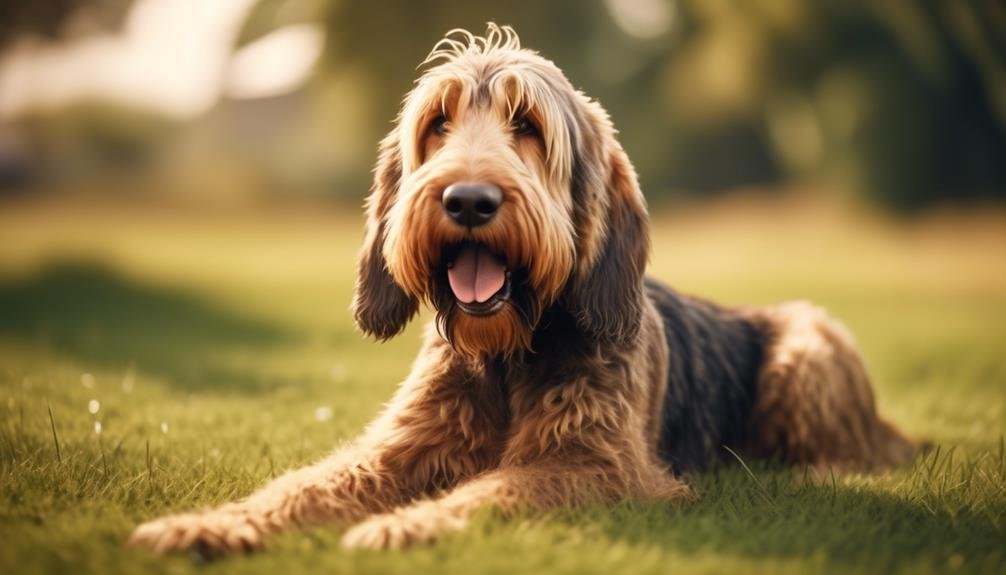
To ensure the well-being and longevity of your Otterhound, it's important to understand their lifespan and health considerations.
Otterhounds have an average lifespan of 10 to 13 years. While they're generally healthy, they can be prone to certain health issues. These include hip dysplasia, elbow dysplasia, and bloat, which is a life-threatening condition.
Regular veterinary check-ups and early detection are crucial for maintaining their health. It's also important to obtain health clearances for conditions such as hip dysplasia, elbow dysplasia, hypothyroidism, von Willebrand's disease, thrombopathia, and eye abnormalities.
Exercise and Care
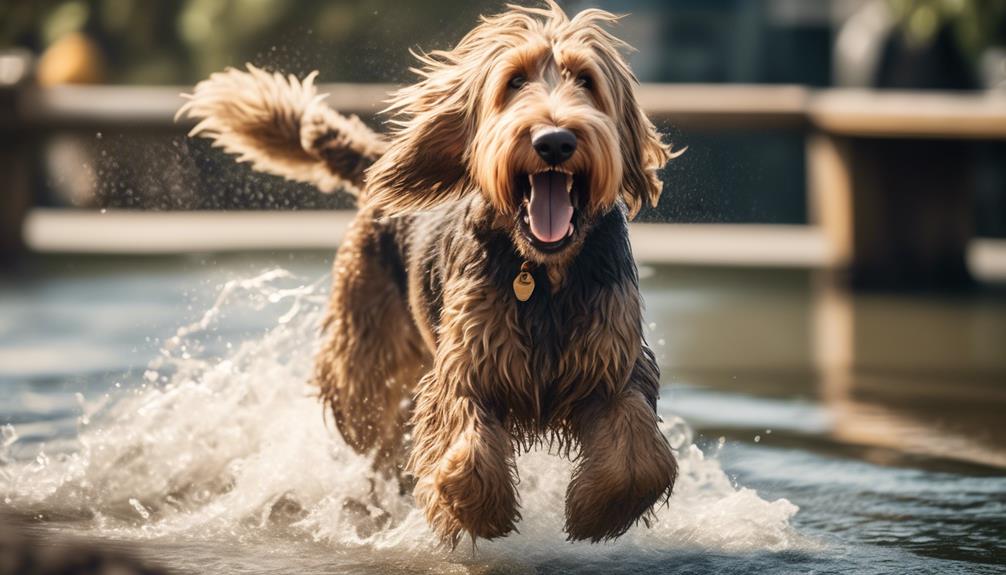
Regular exercise and proper care are essential for the health and well-being of your Otterhound. To ensure your Otterhound stays happy and healthy, here are some important care tips to keep in mind:
- Exercise: Your Otterhound has moderate exercise needs and will benefit from regular walks and playtime. Consider incorporating activities like jogging or swimming to provide mental and physical stimulation.
- Outdoor Living: Otterhounds can sleep outdoors with adequate shelter in temperate and cool climates. However, they shouldn't be left alone for long periods as they can become bored and exhibit unwanted behaviors.
- Feeding: Provide your Otterhound with 3 to 4.5 cups of high-quality dry food, divided into two meals. Measure the food and feed twice a day to maintain a healthy weight. Limit treats and encourage activity to prevent overfeeding.
Feeding and Nutrition
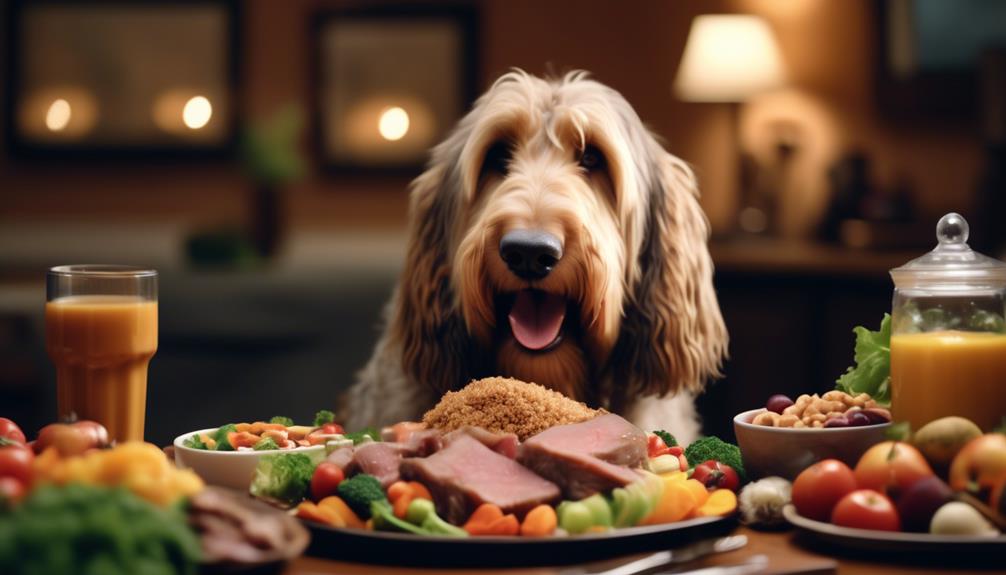
To ensure your Otterhound receives proper care and nutrition, understanding their feeding needs is crucial. Otterhounds require a daily amount of 3 to 4.5 cups of high-quality dry food, divided into two meals. However, the exact feeding amount depends on factors such as size, age, metabolism, and activity level. It's important to measure the food and feed your Otterhound twice a day to maintain a healthy weight.
Limiting treats and encouraging activity can help prevent overfeeding. To assess if your dog is overweight, use the eye test and hands-on test.
Otterhounds have a scruffy-looking double coat that needs to be brushed at least once a week to prevent matting. Avoid clipping the coat, as it takes about two years to grow back.
Grooming and Coat Care
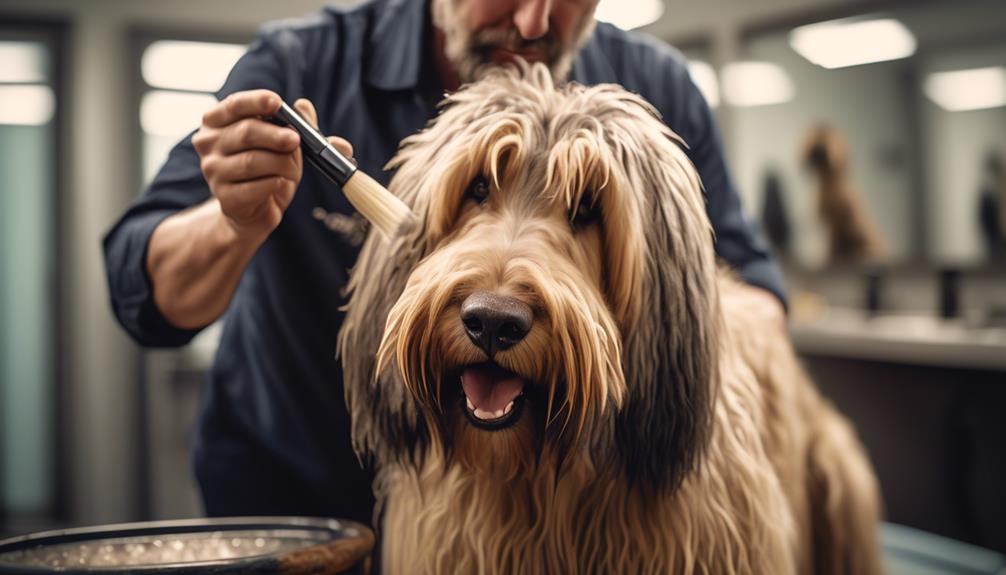
Taking care of an Otterhound's coat requires regular grooming and proper maintenance. Here are three important steps to keep your Otterhound's coat in top condition:
- Brushing: The Otterhound's double coat needs to be brushed at least once a week to prevent matting. Use a slicker brush or a comb with wide teeth to gently remove any tangles or debris. Pay extra attention to the areas behind the ears, under the armpits, and around the tail, as these are common trouble spots.
- Bathing: Otterhounds have a slightly oily coat, so they shouldn't be bathed too frequently. Aim for a bath every 2-3 months or as needed. Use a mild dog shampoo and make sure to rinse thoroughly to remove all the soap residue. After bathing, towel dry your Otterhound and allow them to air dry completely.
- Trimming: Avoid clipping the Otterhound's coat, as it can take up to two years to fully grow back. Instead, focus on trimming the hair around the eyes, ears, and paws to keep them clean and tidy. Use blunt-nosed scissors and be careful not to cut too close to the skin.
Behavior and Temperament
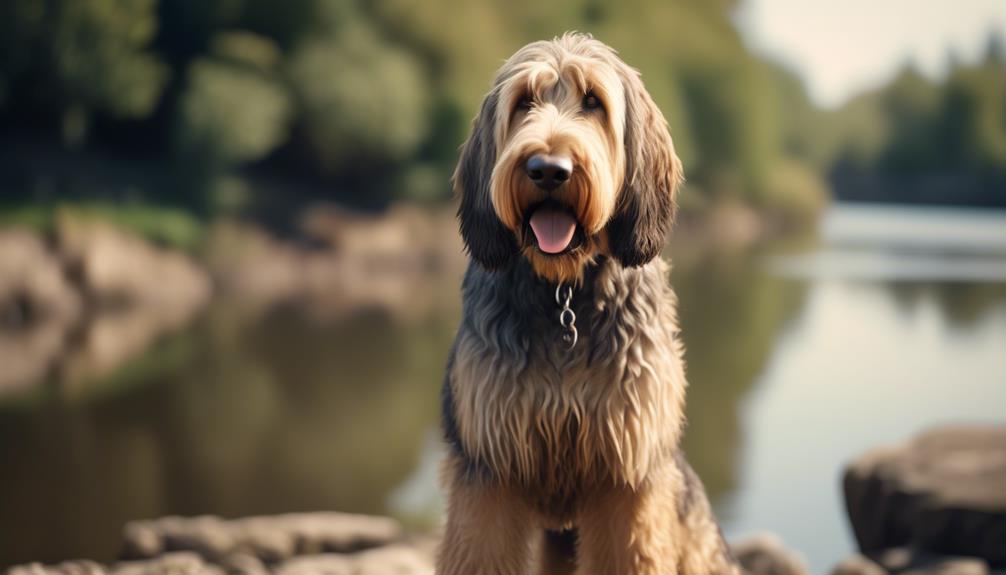
When caring for an Otterhound's coat, it's important to also consider their behavior and temperament.
Otterhounds are known to be amiable and affectionate towards their families. They love children, although their size may lead to rough play. They're independent and not overly clingy, but training can be challenging due to their independence.
While they aren't the best candidates for watchdogs, they'll bark to warn intruders. It's recommended to supervise interactions between Otterhounds and small children due to their size and exuberance.
When properly trained and socialized, they get along well with other dogs. However, caution should be taken when introducing them to small pets as their hunting instinct is strong.
Otterhounds make great family pets, especially for families with older children.
Compatibility With Children and Pets
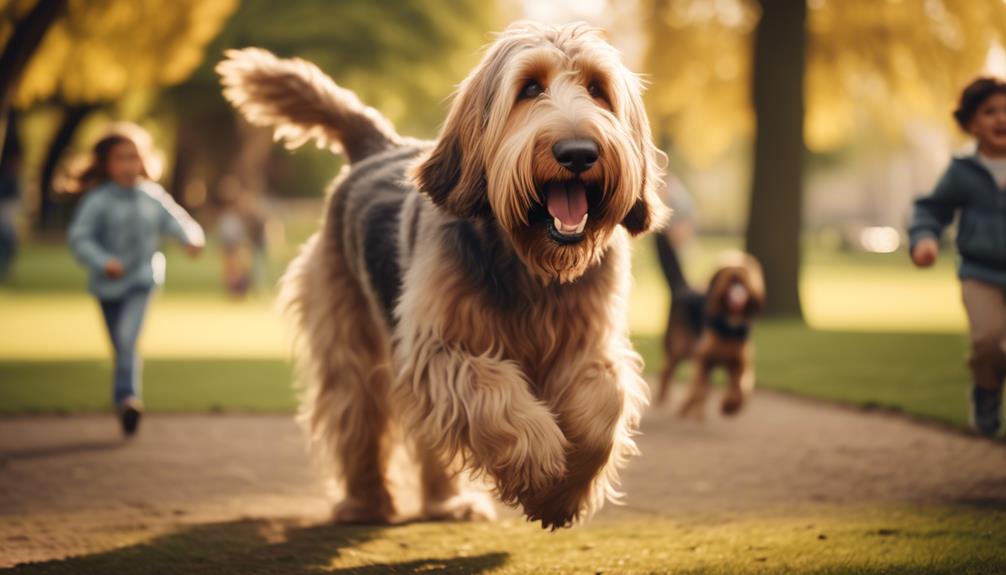
Otterhounds are known for their compatibility with children and pets due to their amiable and affectionate nature. Here are three reasons why Otterhounds make great companions for children and other animals:
- Gentle and Loving: Otterhounds have a gentle and loving disposition towards children. They're patient and tolerant, making them ideal playmates for kids. Their large size may sometimes result in rough play, so supervision is important.
- Good with Other Pets: With proper training and socialization, Otterhounds can get along well with other pets in the household. They've a moderate prey drive, so introductions to small animals should be done carefully. Overall, they're friendly and can form strong bonds with other furry friends.
- Sociable and Friendly: Otterhounds are sociable dogs that enjoy the company of both humans and animals. They aren't overly clingy, but they do love being part of the family. Their amiable nature makes them adaptable to different environments, including households with children and other pets.
Considerations for Adoption
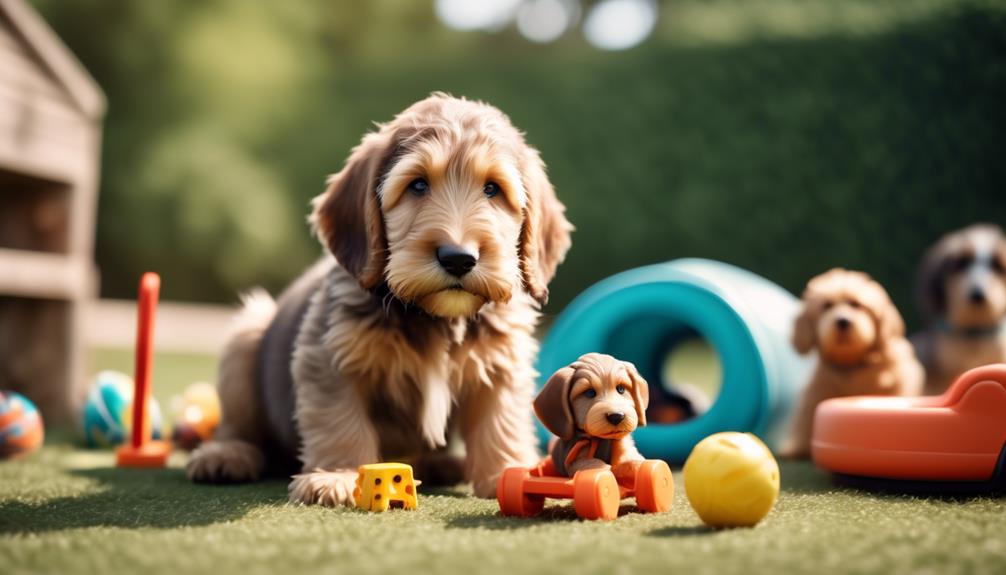
Before adopting an Otterhound, it's important to consider a few key factors.
First, keep in mind that the Otterhound is one of the rarest dog breeds in the world, with less than 1,000 remaining.
Additionally, Otterhounds have a strong hunting instinct and may chase after small animals, so caution should be exercised when introducing them to small pets.
Otterhounds also require daily exercise, preferably jogging or swimming, and aren't recommended for apartment dwellers or families without yards. They can become bored and exhibit unwanted behaviors if left alone too much, so they need a lot of mental and physical stimulation.
Lastly, Otterhounds have a scruffy-looking double coat that requires regular brushing to prevent matting.
Endangered Status of Otterhounds
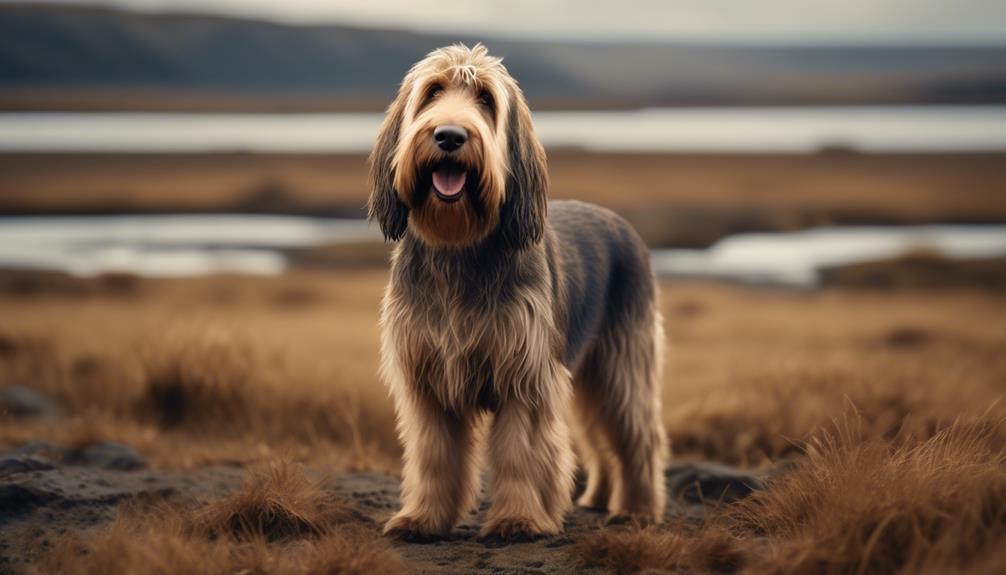
As we shift our focus to the endangered status of the Otterhound, it's crucial to acknowledge the challenges that this rare breed faces in today's world. The following factors contribute to the endangered status of Otterhounds:
- Small population: With less than 1,000 Otterhounds remaining in the world, the breed is officially more endangered than the White Rhino. The small population makes it difficult to maintain genetic diversity and ensure the breed's survival.
- Lack of awareness: Many people are unaware of the existence and unique qualities of the Otterhound. This lack of awareness leads to a limited demand for the breed, making it harder to find responsible breeders and suitable homes.
- Decline in otter hunting: Otter hunting, for which the Otterhound was originally bred, became illegal in 1982. This decline in the breed's primary purpose has contributed to its decline in numbers and increased its endangered status.
These challenges highlight the urgent need to protect and preserve the Otterhound breed for future generations.
Aggression and Prey Drive
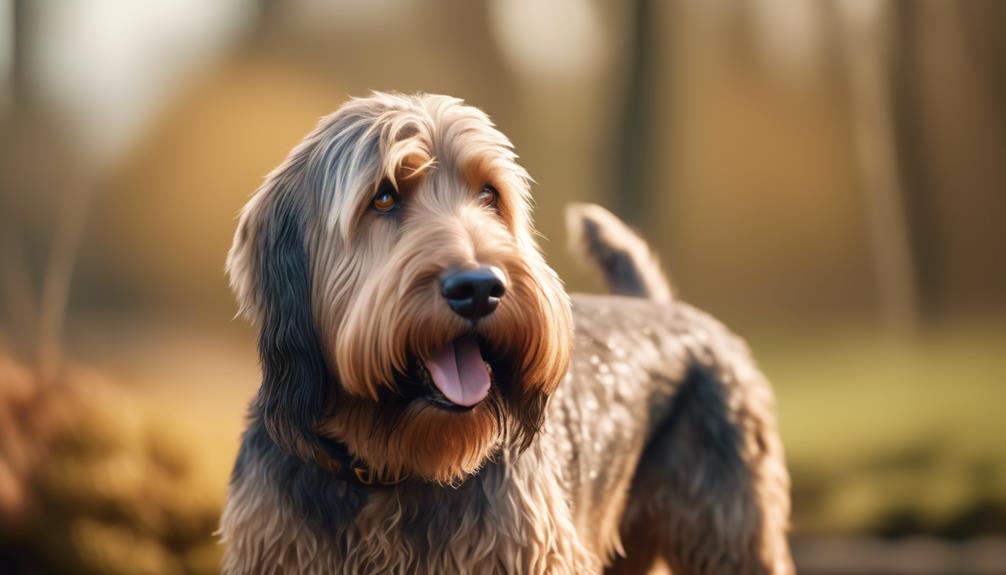
Understanding the difference between aggression and prey drive is crucial in managing a dog's behavior.
Aggression in dogs is often driven by fear and anxiety, which can lead to disastrous consequences such as getting bitten by snakes or attacked by other wild animals.
On the other hand, dogs with strong prey drive may wander into oncoming traffic or chase after animals, putting themselves at risk.
It's important to recognize these behaviors and address them appropriately.
By providing proper training, socialization, and supervision, you can help your Otterhound channel their instincts in a safe and controlled manner.
Remember to always prioritize the safety of your dog and those around them, and seek professional help if needed.
Vocalization and Noise Level
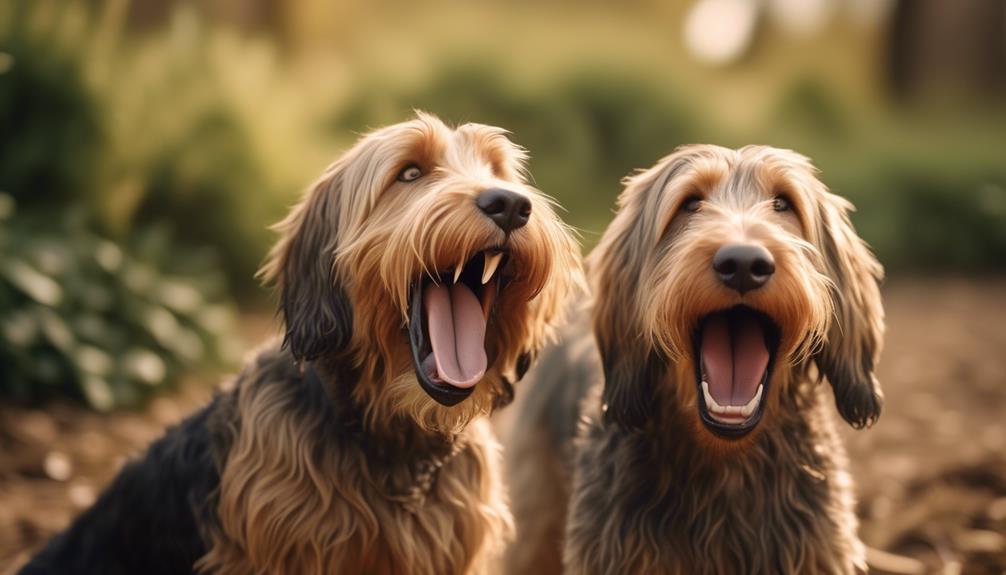
Dogs have varying levels of vocalization, with some breeds being more vocal than others. When considering the noise level of a dog breed, it's important to take into account factors such as their instinctual behaviors and their tendency to bark or howl.
Here are three important things to consider about vocalization and noise level in dogs:
- Breed tendencies: Certain breeds, like hounds, are known for their howling and may not be suitable for a noise-restricted environment. These breeds have a natural inclination to bark or howl, and it's important to consider this before bringing them into your home.
- Alertness to strangers: Dogs that have a tendency to bark or howl may be more alert in the presence of strangers. While this can be beneficial for security purposes, it's important to consider the impact on your neighbors and your living situation.
- Potential for wandering: Some breeds, like hounds, have a higher tendency to wander due to their strong instincts. If you live in an area where your dog can easily escape, it's important to take extra precautions to prevent them from running off.
Energy Level and Exercise Requirements
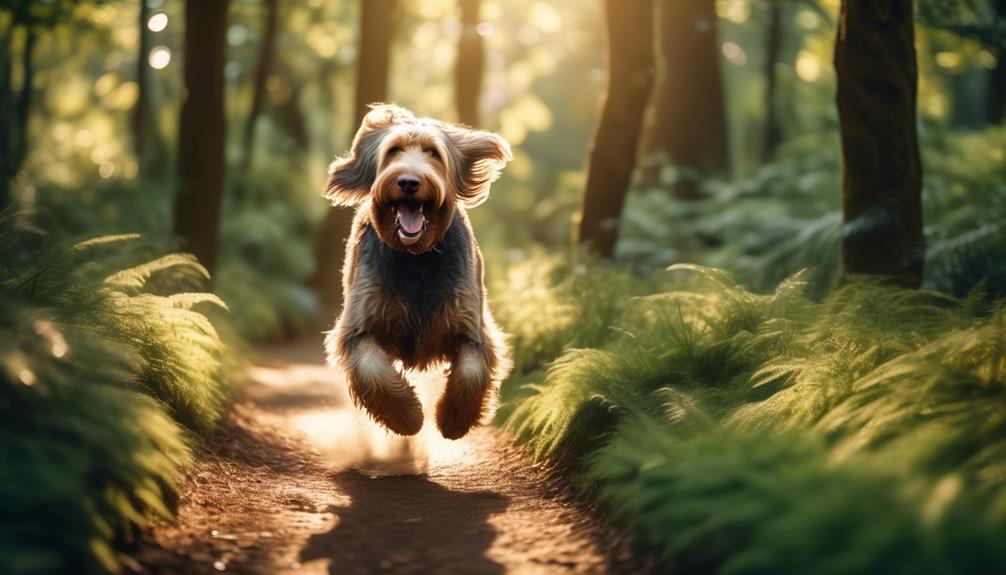
Are you curious about the energy level and exercise requirements of different dog breeds?
When it comes to Otterhounds, they have a moderate energy level and require regular exercise to stay happy and healthy.
Daily walks and playtime are essential for them. However, they aren't as high-energy as some other breeds.
This means that they won't need intense exercise sessions or long runs every day. Instead, they'll be content with a moderate amount of exercise.
Keep in mind that Otterhounds have a hunting background, so they do have a natural instinct to explore and sniff around.
Providing mental stimulation and interactive toys can also help keep them mentally and physically engaged.
Frequently Asked Questions
Are Otterhounds Good at Swimming?
Yes, otterhounds are good at swimming. Their webbed feet, strong bodies, and oily coat make them excellent swimmers. They enjoy the water and have a natural instinct for swimming.
Do Otterhounds Have a Strong Prey Drive?
Yes, otterhounds have a strong prey drive. They were bred for otter hunting in medieval England, so their hunting instincts are deeply ingrained. It's important to supervise them around small pets.
How Often Should I Groom an Otterhound's Coat?
You should groom an Otterhound's coat at least once a week to prevent matting. Avoid clipping the coat, as it takes about two years to grow back. Regular brushing is important for maintaining their shaggy appearance.
Can Otterhounds Be Left Alone for Long Periods of Time?
No, Otterhounds should not be left alone for long periods of time. They are sociable dogs that form strong bonds with their family. Leaving them alone for extended periods can lead to boredom and unwanted behaviors.
Are Otterhounds Prone to Separation Anxiety?
Yes, otterhounds can be prone to separation anxiety. They are highly sociable dogs that form strong bonds with their families. Leaving them alone for long periods of time can cause them distress and anxiety.
What Are Some Similarities and Differences Between the Otterhound and Maltipoo Dog Breeds?
The Otterhound and Maltipoo dog breeds have different origins and appearances. The Otterhound is a large scent hound known for its shaggy coat and webbed feet, while the Maltipoo is a small designer breed with a fluffy, non-shedding coat. Both breeds are known for their friendly and sociable characteristics. For more maltipoo dog breed information characteristics, research on their temperament and grooming needs is recommended.
Conclusion
In conclusion, the Otterhound is a truly unique and fascinating dog breed with its distinctive appearance and rich hunting heritage.
With their friendly and sociable nature, they make great companions for families.
However, it's important to consider their moderate exercise needs and proper training and socialization.
Overall, the Otterhound is an otterly exciting addition to any family, providing love, companionship, and a lifetime of adventure.




